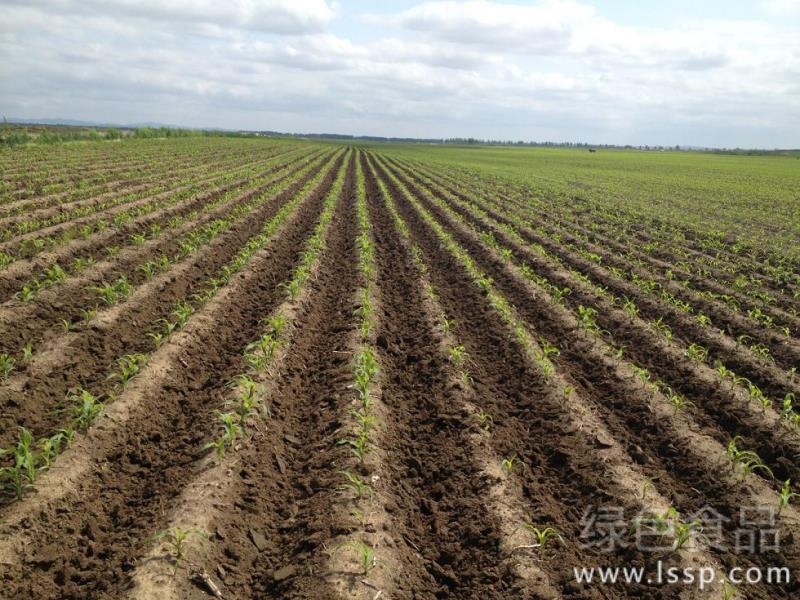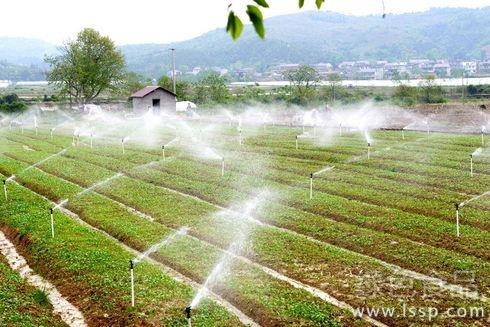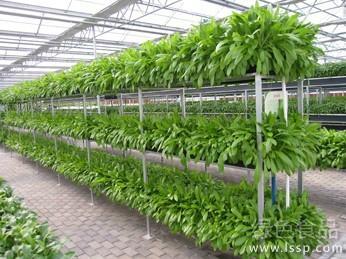Three ridges cultivation techniques of soybean: double rows on ridges with layered fertilization

Three ridges cultivation of soybean
The three-ridge cultivation technique of soybean is developed by digesting and absorbing soybean cultivation techniques at home and abroad by Heilongjiang Bayi Agricultural Reclamation University, which is suitable for the ridge cultivation area of Northeast China.
The so-called "ridge three" technology refers to the comprehensive use of deep loosening, layered deep fertilization and double rows on the ridge on the basis of ridge cultivation. In the specific application in production, it is necessary to cooperate with other conventional technologies. The stereotyped planters are: 2BT-2 and 2BTGL-2 small planter, 2BTGL-6 medium planter, 2BTGL-12 large planter.
The principle of increasing yield: through deep loosening, breaking the lower layer of the plough, improving the hardening state of the lower layer of the plough, making it loose in structure, conducive to water storage and rooting; layered deep fertilization is beneficial to improve the utilization rate of fertilizer and promote the deep rooting of soybean; double rows on ridges improve the growth space of single soybean plant and make the distribution of plants in the field more reasonable.
Over the years, the eastern part of Inner Mongolia has also been popularized and applied. From 2005 to 2007, the national science and technology household entry project was implemented in Zhalaite Banner, mainly promoting soybean ridge and three cultivation techniques. After three years of demonstration planting, the yield is 20-30% higher than that of the traditional planting method. In the high-yield plot, the yield per mu exceeded 250 kg, creating a record for high yield of soybean in Zhalaite Banner.
This technology has the advantages of remarkable increase in production, strong maneuverability and broad prospect of popularization.
The comprehensive technologies are as follows:
I. the main variety
Select varieties that are more than 10 days lower than the local frost-free period and more than 200 ℃ lower than the local effective accumulated temperature. Hefeng 50 and Suinong 28 can be selected in the south of Xingan League, Mengdou 30 and Mengdou 14 in the middle, and Heihe 38 and 27 in the north.
Second, ridge three core technology
1. Deep pine:
Deep loosening should be based on breaking the bottom of the plough, and the depth is generally 20-30 cm, which should be completed when closing ridges and fertilizing, that is, when opening ditches and fertilizing, deep ditches should be opened to achieve the purpose of deep loosening. For dry cultivation, deep loosening and ridging should be carried out in autumn and sown directly on ridges in spring. If you water and sow seeds, you can loosen and close the ridges in spring, and the ridges can be ditched and watered for sowing.
2. Stratified deep fertilization:
When closing the ridge with fertilizer, half of the total amount of chemical fertilizer can be applied to the depth of 8-10 cm under the seed. When sowing, apply the other half of the fertilizer 2-3 cm below the seed. The total amount of chemical fertilizer applied per mu is about 20 kg. The three-element compound fertilizer of nitrogen, phosphorus and potassium is selected, which requires 10% nitrogen, 22% phosphorus and 8% potassium, that is, N10, P22 and K8. Or their own formula, use diammonium phosphate 10 kg per mu + urea 5 kg + potassium sulfate 5 kg, mix evenly and use.
3. Mechanical precision sowing, double rows on ridges:
Use a double-row seeder for precision sowing and double-row sowing on the ridge. The row spacing is 12 cm, the plant spacing is 12 cm, and there are 17,000 seedlings per mu. The seedling protection per mu should vary from variety to variety and from region to region. The southern area should be sparse, the northern area should be dense, the land with high water and fertilizer should be sparse, and the medium fertility should be dense. The plant spacing should be adjusted according to the variety and the plot. When sowing, if the soil moisture is insufficient, it should resist drought and water the seed.
The shaping planters of soybean ridge three technology are: 2BT-2 and 2BTGL-2 small planter, 2BTGL-6 medium planter, 2BTGL-12 large planter, which can be selected according to the specific situation.
III. Conventional supporting technology
Take Ridge three technology as the core, with the following conventional techniques.
1. Rotation and stubble selection
Rotation with Gramineae crops for more than three years, corn stubble, grain stubble, millet stubble and wheat stubble are the best. Can not choose sunflower stubble and beet stubble, barren soil is not suitable to grow soybeans.
2. Soil preparation by stubble
Stubble preparation should be carried out in the first ten days of April.
3. Applying farm manure and foliar fertilizer
Apply 2 cubic meters of rotten farm manure per mu and apply it evenly to the field. Foliar spraying fertilizer, 20 ml Yunda 120 + urea 0,4 kg + potassium dihydrogen phosphate 0,15 kg, 30 kg water per mu, foliar spray.
4. Seed coating
Seed coating can control root liriomyza, root rot, underground pests, and supplement trace element fertilizer. 35% grams of dofol seed coating agent can be selected and used according to the instructions.
5. Chemical weeding
The soil was treated with 48% trifluralin EC, 150-200 ml per mu, 15 kg of water, evenly sprayed on the surface, and then immediately mixed with the soil to prevent volatilization of the liquid, and the seeds could not be sown until 5-7 days after application. It can be sprayed before stubble, and then mixed with stubble, or sprayed before ridge, combined with ridge to mix soil. Trifluralin has a wide herbicide spectrum and is safe for the next crop of corn.
Spray at the seedling stage, you can use quizalofop + ethyl carboxyfluoxane, use according to the instructions, there is no drug harm to the next crop.
6. Sowing at the right time
The best sowing time is from May 5 to 15. Early sowing, rusted seedlings and serious grass shortage. Late sowing can easily lead to immaturity, reduced production and poor quality.
7. Field management
Irrigation: irrigation should be timely in case of drought, especially in June and July, when soybean blossoms and pods, there must be no shortage of water. Irrigation is the main guarantee for high yield of soybean.
Weeding: in the later stage, the big grass in the field should be pulled up manually.
Pest control: pay attention to the control of meadow borer. During the spawning period of meadow borer, weeds in the field are cleared and eggs are eliminated. In the 1-3 instar stage of larvae, 75 ml per mu, 15-22 kg of water, foliar spray.
8. Harvest
In late September, soybeans can be harvested after falling leaves. It is necessary to thresh in time after harvest, reduce the harm of soybean heart borer, and reduce fire so as to return to the warehouse.
- Prev

Introduction of five agricultural water-saving technical models for improvement
Introduction of five agricultural water-saving technical models for improvement
- Next

Promote the aerosol cultivation of scientific vegetable soilless cultivation techniques
Promote the aerosol cultivation of scientific vegetable soilless cultivation techniques
Related
- Fuxing push coffee new agricultural production and marketing class: lack of small-scale processing plants
- Jujube rice field leisure farm deep ploughing Yilan for five years to create a space for organic food and play
- Nongyu Farm-A trial of organic papaya for brave women with advanced technology
- Four points for attention in the prevention and control of diseases and insect pests of edible fungi
- How to add nutrient solution to Edible Fungi
- Is there any good way to control edible fungus mites?
- Open Inoculation Technology of Edible Fungi
- Is there any clever way to use fertilizer for edible fungus in winter?
- What agents are used to kill the pathogens of edible fungi in the mushroom shed?
- Rapid drying of Edible Fungi

